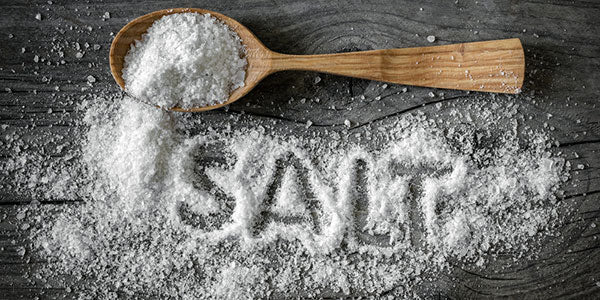
There is a very good chance that you have heard about how reducing your salt (or sodium) intake can be good for your health. The average American gets around 4,000mg of sodium each day. That's nearly double the recommended intake of 2,300mg of sodium per day according to the Centers for Disease Control and Prevention, and significantly higher still than bistroMD's daily average of 1500mg for healthy weight loss. But it's not like we consume so much extra sodium on purpose, right? We don’t walk around dumping extra salt on everything, or that is, most of us don't.
Hidden Sources of Sodium in Processed Food
Sodium doesn't just come from salt you add to your food at the table, or salt that gets sprinkled over your french fries. It also sneaks in from sodium used to flavor foods like hot dogs, deli meats, bacon and sausage. These particular foods also contain sodium in the form of sodium nitrate and sodium nitrite, which are preservatives. Another common preservative is sodium benzoate, which will increase the sodium content of foods it is added to as well. Some bakery-fresh foods contain sodium bicarbonate—also known as baking soda. While this doesn’t necessarily taste salty, it does increase the amount of sodium present in that food product.
Is the CDC Recommendation for Sodium Too High?
Lots of people are curious to know if the recommended sodium intake provided by the CDC is too high, or conversely, maybe even too low. For example, athletes who sweat a lot have higher salt requirements. You do too if you go for a run or attend a hot yoga class where you sweat more than usual.
The key to balancing your sodium intake is to ensure that you are getting the right ratio of potassium. Potassium is found in large amounts in fresh fruits and vegetables, like avocado, watermelon, tomato, and yes, bananas. The right sodium to potassium ratio is 1:4 – meaning you need four times as much potassium as sodium each day. When you are eating lots of fresh foods like apples, oranges, kiwi, and squash, this is easy to do. Eating out a restaurants and buying food that comes pre-packaged makes this incredibly difficult to accomplish.
A good way to lower your sodium intake and up your potassium? Add in one (1) fresh fruit or vegetable each day. If you already eat one (1), then add another. These fresh foods will gradually begin to displace other salty foods as you begin to incorporate them into your diet. Drinking water instead of other fluids can also help hydrate you, which will can help reduce salt cravings if you have these.
Why Should We Even Care at All About Sodium Intake?
So why should we watch our daily sodium intake, and keep within recommendations? Because too much salt will increase your blood pressure – which automatically makes you more likely to develop serious cardiovascular diseases. It also means you are more likely to have a stroke. High blood pressure is known as the silent killer, because you can have it and not even be aware. A normal blood pressure is 120/80. Go to your local pharmacy or grocery store, sit down in the little chair with the blood pressure cuff for about 5 minutes with your legs uncrossed and breathe normally. Then start the machine. If your reading is 140/90 or higher on two or more occasions, you should visit your doctor. If it is 180/110 – go to a clinic or emergency room immediately.
What Happens if You Eat Too Much Sodium?
When you have increased pressure inside your blood vessels, it doesn’t just make your heart work harder. The very small capillaries and blood vessels in places like your kidneys and your eyes will suffer too. The walls of these vessels are super thin—in fact, some of them only allow a single red blood cell through at a time. High blood pressure from not sticking with your recommended sodium intake can put too much pressure on these fragile vessels, and cause damage to vital organs and impair blood flow to important areas overall.
People who suffer from high blood pressure, or who are at risk—such as adults over the age of 51, individuals who are of African American descent, and anyone who has kidney disease or diabetes—should limit their sodium (or salt) intake to about 1,500mg per day, because they are already at risk for developing high blood pressure, which is about half the US population.
What Happens if You Don’t Get Enough Sodium?
Low sodium intakes can be just as detrimental to your health as high sodium intake, but this happens in a different way. If your salt intake is too low, you can suffer from cardiovascular events such as heart palpitations, seizures, and coma. People who suffer from anorexia—which is simply the medical term for a loss of appetite—as well as people who are just too good at reducing their sodium intake, are at risk for these kinds of issues as well.







